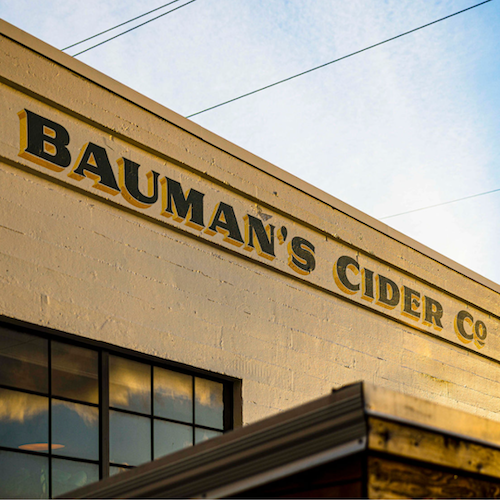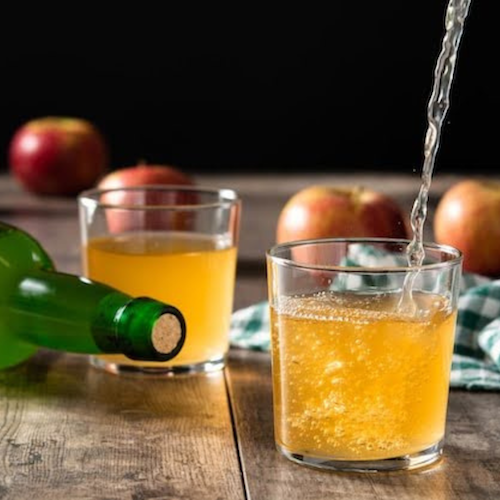Archive for October 2024
The American Cider Association Announces Departure of CEO Michelle McGrath After 8 ½ Years of Inspiring Leadership

Portland, OR–Longtime American Cider Association CEO Michelle McGrath will depart her role at the end of 2024. This change comes after more than 8 years of successful leadership overseeing significant advancements in the ACA’s mission for the benefit of the US cider community. McGrath was hired in 2016 as the first CEO of the ACA, then called the United States Association of Cider Makers. Since her hiring, she led a transformation of the ACA into the internationally-respected nonprofit trade organization that it is today.

“Michelle has been instrumental at the helm of ACA for both our organization as well as for the cider industry. We will miss her creative, strategic, and compassionate leadership, but we are excited to see where her next endeavors take her. The board is grateful for Michelle’s 8 ½ years of service during which she reached many meaningful milestones for the ACA,” says current ACA Board President, Christine Walter of Bauman’s Cider.
As CEO, McGrath expanded and diversified membership, events, and programs, enhanced the association’s capabilities, reach, credibility and network, and effectively advocated for policy change supporting cider with Congress, the TTB, and state governments.

“I’m really proud of what the board, staff, volunteers, partners, and members have accomplished together over the last 8+ years. It’s been a true honor to work with such inspiring people, and although I am ready to move to the next phase of my career, I will cherish my time and the relationships I’ve built at the ACA forever,” says McGrath. “It’s hard to express how much the people in this industry mean to me, and I’m incredibly grateful for the friendships and memories made. I was a cider fan before I took the reins at the ACA, and I’ll be a cider fan for life!”
A few of McGrath’s many accomplishments:
- Increased the ACA’s membership by more than 60% to nearly 800 members
- Achieved a substantial 100% increase in annual revenue by diversifying funding sources
- Expanded the ACA’s team to several highly capable and passionate team members
- Organized and led 8 CiderCon® events, the largest cider-industry event worldwide
- Oversaw the development, growth and global expansion of the ACA’s Certified Cider Professional program, the only globally available education program for beverage and culinary industry professionals
- Championed programs and policies to support the growth of a diverse interest in cider, including the ACA’s Cider is for Everyone Scholarship
- Created a market insights program that shares market data and reports with members and the beverage industry at large
- Fostered strong relationships with key national beverage media outlets and cultivated meaningful press highlighting the growth of cider and the humans behind it
- Supported national collaborative efforts to expand small-producer tax credits
- Fought for the right to list harvest years on TTB-approved labels for cider over 7% ABV
- Led efforts in securing TTB approval for 12 oz (approved in 2020), 16 oz, and 19.2 oz packaging sizes for wine, mead, and cider over 7% ABV (TTB comments recently closed)
- Collaborated with congressional champions and allied segments to introduce the Bubble Tax Modernization Act (HR 7029) to increase allowable carbonation thresholds for fruit cider, fruit wine and fruit mead under 8.5% ABV
McGrath shared that her championing of farmers will continue in her next role. She plans to stay engaged with the cider industry, and she will be at CiderCon® 2025 in Chicago, Illinois.
“I’m excited to see everyone, and to experience the cider from the featured guest country this year–Chile! Let’s share some cider together, friends!” McGrath says.
The ACA Board of Directors is accepting applications for its next dynamic and visionary CEO until November 24. Interested applicants are encouraged to apply early, as applications will be reviewed on a rolling basis. Those interested in applying can learn more here.
###

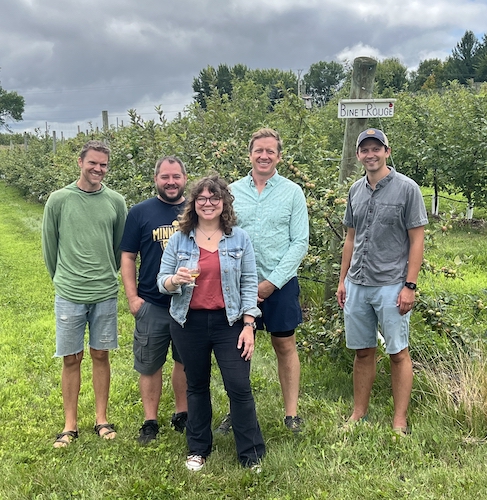
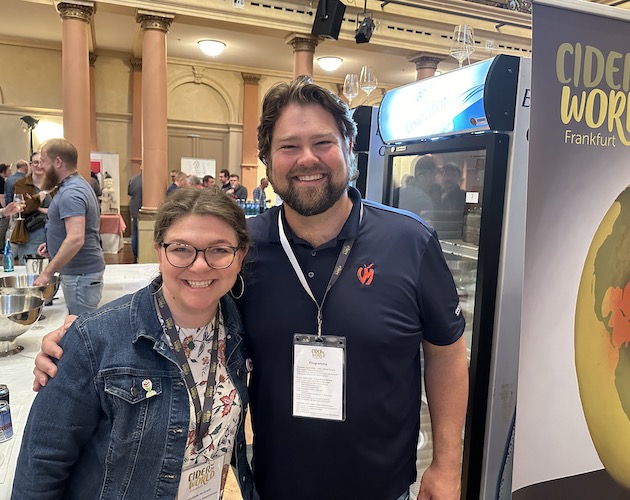
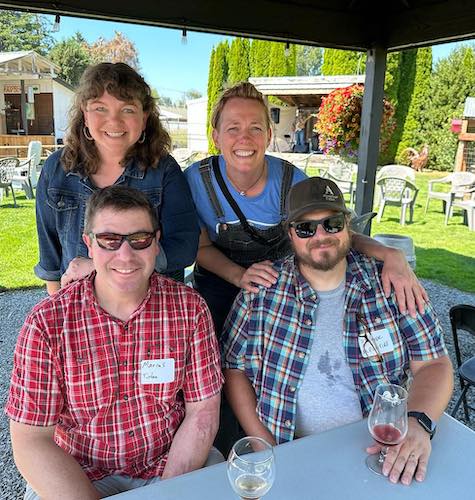







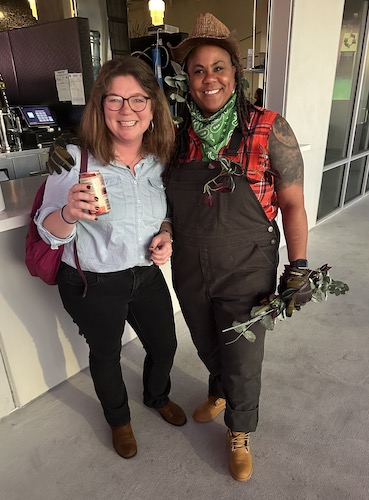

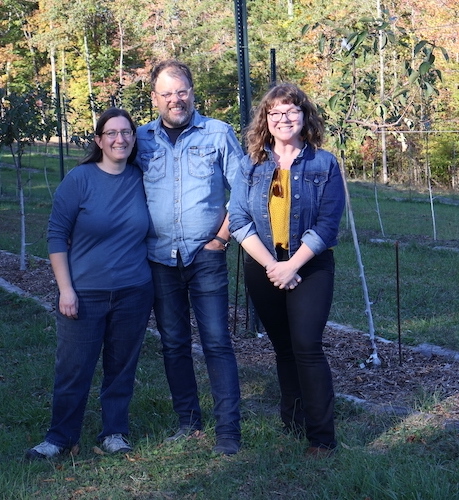

Join the American Cider Association as Our Next Visionary CEO!

Are you a dynamic leader looking to dive into the hard cider industry to fight for cider’s rightful place in the beverage alcohol space? Are you an energetic convener who specializes in bringing people together behind a shared vision? Do you love championing agriculture, apple growers and innovators? Do you get excited about new market stats, storytelling, event planning? Are you inspired by partnering with members of Congress to help position the cider industry for more success? If you answered yes to any of these questions, please consider learning more about the American Cider Association’s current open position for our next CEO!
The Organization
The American Cider Association (ACA) is a nonprofit membership-driven trade association that supports commercial hard cider and perry producers in the U.S. Our mission is to build and protect a sustainable and diverse cider industry in the United States through targeted education, effective advocacy, and a welcoming, thriving cider community. We were founded by commercial cidermakers for commercial cidermakers at CiderCon® 2013, the annual gathering of professional cidermakers from across the country and the globe which the ACA has managed since 2016.
Our programs include government affairs, CiderCon®, member education, market data insights, the Cider is for Everyone scholarship, media engagement, and the only globally available cider education and certification program for food and beverage professionals–the Certified Cider Professional program. We are a big tent organization and all commercial cider producers are welcome to join and engage in our work.
The Market
The cider industry has grown sustainably over the last 13 years and it is continuing to see growth through the success of regional cider businesses. Today the cider market is 10X the size it was a decade ago, and there are 1,300 commercial producers with at least one producer located in every state. The beverage industry is very dynamic, and many segments of the beverage industry are experiencing contraction. Cider could be poised for continued growth with its popularity with Gen Z consumers and its relative environmental footprint compared to other beverages. The vast majority of cider businesses are small, and more than half of the producers in the US grow at least some of their own apples. Business models are very diverse in the cider industry, with small and large, urban and rural cideries all playing important roles.
The Role
The next CEO of the American Cider Association will provide strategic, dynamic and inspiring leadership for the cider industry and the organization. The CEO holds overall operational and fiscal management responsibilities for the association. They lead the ACA in accordance with our mission, the evolving needs of our members, and strategic guidance from our board of directors. The role is comprised of:
- 25% Strategic Management
- 25% Event Management (CiderCon®)
- 15% Fiscal and Operational Management
- 15% Partnership and Member Management
- 10% Advocacy
- 10% Board Management & Development
Application Process:
- To read the full job description for this position, click here.
- To apply for this position, send your resume and cover letter to careers@ciderassociation.org. Please include 3 professional references in your application.
- Applications will be reviewed on a rolling basis and interested candidates are strongly encouraged to apply early.
- The application window will close when the position is filled or at 9PM PT on November 24, 2024.
- We kindly ask that you refrain from reaching out with inquiries about this position. Only applications submitted through the instructions provided on ACA’s website will be considered. Thank you for your understanding!
Cider Judges Reflect on Historic GABF Competition

The American Cider Association was honored to support the historic inaugural cider competition as part of the Brewers Association’s Great American Beer Festival this fall in Denver, Colorado. The cider categories were developed through ACA’s partnership with GABF and input from experienced cider sensory professionals. The ACA was pleased to share our expertise with the competition, and cider felt respected throughout the event and the planning. The GABF solicits category feedback as part of its annual process, so next year descriptions will be even more improved.
The ACA worked with GABF to ensure that the judges were exceptionally well qualified to evaluate cider. It was a diverse pool of judges by geography, age, race, profession and gender, and cider viewpoints were well rounded. All of the judges were either Certified Pommeliers, senior BJCP cider judges with cider judging experience, or cider experts with years of cider sensory experience. This included the entire ACA Education Committee who was pleased to join this history-making cider judging crew at GABF.
Cider was judged on balance of structural components (acid, sugar, and if relevant to the category, tannins), integration and harmony of flavors, fermentation quality, fruit perception, and alignment with category descriptions. There were 5 categories for cider this year, and hopefully more in the future as entries grow.
The GABF medalists in cider this year were:
- No/Low Tannin Cider
- GOLD, The Russets, Snow Capped Cider (CO)
- SILVER, Gravenstein, Snow Capped Cider (CO)
- BRONZE, 10th Anniversary, 2 Towns Ciderhouse (OR)
- Tannic Cider
- GOLD, Classic Dry, Gowan’s Cider (CA)
- SILVER, Cedar Valley Blend, Paha Cider Co. (IA)
- BRONZE, 2022 Cidre Bouché, 2 Towns Ciderhouse (OR)
- Fruit or Botanical Cider
- GOLD, Blackberry, McMennamin’s Edgefield Winery (OR)
- SILVER, Ozark Strawberry Rhubarb, Ozark Beer Co. (AR)
- BRONZE, Pineapple Cider, 2 Towns Ciderhousese (OR)
- Experimental or Barrel-Aged
- GOLD, Rosé Cider, Gowan’s Cider (CA)
- SILVER, 2019 Pommeau, 2 Towns Ciderhouse (OR)
- BRONZE, 802 Barrel Aged, Vermont Cider Co. (VT)
- Single Varietal
- GOLD, Mountain Rose, Haykin Family Cider (CO)
- SILVER, Macintosh, Gowan’s Cider (CA)
- BRONZE, Glow – Airlie Red Rosé, Alpenfire Cider (WA)
Let’s hear from a few judges about what it was like to make cider history at GABF!

Max Finnance
Beverage Consultant, Certified Pommelier, Master Cicerone, 5x GABF Judge
“I had a blast judging this inaugural class of ciders at GABF ’24, and consider it an honor to have been included. Hearing the incredible conversations among some of the cider world’s leading minds, and helping to select the best of the best over three days of judging, it only makes me more excited about the future of cider at GABF. As consumers continue to get more diverse with their beverage choices, a partnership like this between the preeminent cider and beer organizations in the country makes a ton of sense to me, and has the ability to help catapult the best cidermakers into visibility for a whole new audience. I guarantee that Gowan’s, 2 Towns, Haykin Family, and the rest of the winners all experienced a spike in web queries over the weekend, something that other cideries will be smart to strive for in future years.”

Brighid O’Keane
Executive Director at Cider Institute of North America, Certified Pommelier
“This is a year for the history books! It was a great opportunity for cider to be recognized in the prestigious and rigorous GABF competition. The winners presented stellar products and we look forward to continued partnerships and increased involvement in the years to come.”
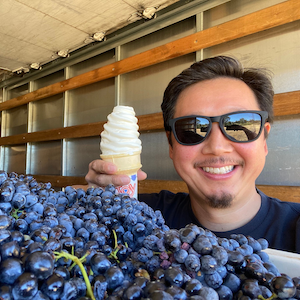
Lester Koga
Co-Founder at Barebottle Brewing Co., Certified Pommelier
“As a brewer/cidermaker/beer judge/Certified Pommelier, it was an honor to help judge the first GABF cider competition. In the world of beer judging, we have very established guidelines in which we judge each beer category (over 100+ styles). There’s a lot of rigor around the adherence to specific aroma/ flavor characteristics, typical of style. With cider spread across a manageable 5 categories, there was a lot more opportunity for broader style expression within each. We were able to judge on technical merits, but also on the artful execution of each cider. Without question, there were so many unique and wonderful examples that awarding medals was not easy. Beer and cider often have a place at the same table and it’s encouraging to see them share a podium as well.”

Kate Pinsley
Senior Director of Beverage at Schilling Cider, Certified Pommelier, and longtime cider nerd
“GABF is such a legendary beer festival with a respected and meticulously run competition, and it warmed my heart to have cider and cidermakers and cider drinkers so enthusiastically welcomed into that space. I was inspired by the open-mindedness of Serious Beer People in bringing cider to the table and taking care to understand and respect its unique and diverse characteristics. The cider community will only get stronger from having more of these conversations about what cider is, and what good cider is. It was an honor to be part of cider’s introduction into GABF, and I look forward to building a tradition of cider at GABF — let’s get more categories and more cider into GABF 2025!”
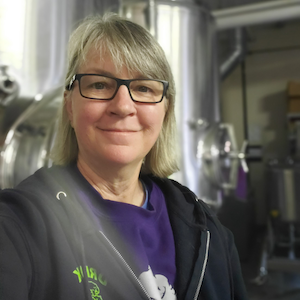
Leah Dienes
Partner, Head Brewer at Apocalypse Brew Works, BJCP Beer and Cider Judge, President of Kentucky Guild of Brewers
“I was extremely excited to find out when I arrived at GABF that cider would be a part of the judging. I was pleased to be asked to judge the ciders and to extend my BJCP cider knowledge with the new categories presented at the competition as well as learn from the expertise of the American Cider Association judges. The discussions during the competition and especially the medal rounds were enlightening and got me excited to want to study, drink and create more ciders in my brewery. It was a great experience that I hope to extend to the next competition and to spread more cider information to our breweries in Kentucky.”
Guest Blog: Regional Cider Sales Across the U.S. Are Up
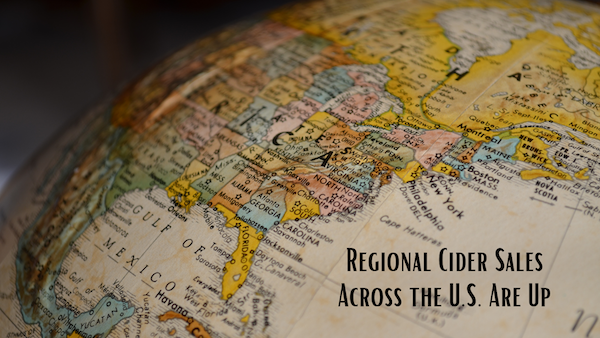
With cider production up in over 30 states, is the beverage finally shedding its “fall-drink-only” status?
When rosé burst into the wine world in the mid-2000s, producers had a lot of work to do when it came to shaking off its ‘summer-drink-only’ rank. Similarly, cidermakers have faced challenges when it comes to showing consumers the drink is enjoyable all year, not just during pumpkin patch and u-pick season. (Though it’s quite lovely then, too).
But perhaps, cidermakers are starting to see their efforts pay off—literally. According to NielsenIQ, from July 2023–July 2024, regional, or independent, cider retail sales in NIQ-measured channels have reached a whopping $806.7 million, up 3.4% from the year previous. Additionally, regional cider was one of just three sub-categories to also experience volume growth in the beer-tracked category.
Naturally, you might be thinking ‘sure, but that includes fall and winter, cider’s popular seasons.’ And you would be correct. But when you break those numbers down even further and look at the past 13 weeks, regional off-premise cider sales are still up by just under 2% and have raked in approximately $217.6 million in sales.
The growth seems to be stemming from states not often associated with cider—let alone cidermaking. Big cider states like California and New York saw their sales rise by 3.8% and 1.5% respectively. But surprisingly, it was regions like Georgia saw cider sales rise 58% to $2.2 million while its production jumped 54%; Arizona saw its sales rise nearly 33% to just shy of $2 million with production up 22%; and lastly, Tennessee saw its sales spike 34.3% to just shy of $2.5 million with its production rising 28%. These states were outliers in terms of their double-digit growth. But 28 additional states also saw a rise in both their cider sales and production.
Historically, cidermakers have long-relied on their tasting rooms to drive most of their sales. And it makes sense. The American cider scene is still young (relatively speaking of course). Meaning there are still many consumers who don’t quite know what it is or harbor some pretty unfortunate preconceived notions of the drink thanks to a bottle they chugged in college. Whereas those going to a cidery likely already have, at the very least, a base-level interest. Not to mention, the person working the tasting room has the opportunity to sell consumers and to-go bottles and cans.
Yet, in the past year, regional cider brands saw their off-premise sales increase by 3.4 basis points. Meaning more consumers are scanning the shelves stocked with beers, wines, flavored malt beverages (FMB), and opting for cider instead.
Six-packs were by far the most popular format to buy cider in, claiming 48% of off-premise sales (both local and national). It’s followed by four-packs (20% of regional and national) and 12-packs (16% of regional and national). Bottle sales across local and big-name brands were down.
As for flavor profiles, the standard “apple” hard cider reigns supreme, raking in over $800 million in sales. That number is down slightly from the year previous. But perhaps it’s because there are so many additional flavors to try, running the gamut from blueberry to dragonfruit.
When it comes to experimenting with some different flavors, consumers seem a bit more willing to do so with their local cidery. For instance, regional producers saw their berry, tropical, and stone fruit cider sales jump 3.9, 12.1 and 21.8 basis points respectively. National brands, on the other hand, were down in nearly all flavor categories minus tropical and citrus. Neither of which saw a major bump in sales or production volume.
The Bigger Picture
When looking at the overall beer and FMB market, there’s no denying that cider is a small slice of the pie, it makes up about 1% of sales. And no, cider shouldn’t be compared to beer when it comes to production or flavor profile. But there are some similarities and contrasts when it comes to the rise of craft beer and what we might be starting to see with local cider.
Back in 2012, craft beer was starting to take off and accounted for about 10% of the market. In the decade-plus since, it’s fluctuated up and down. At its peak in 2021, it held 26.1% of the beer market according to Statista. Currently, NielsenIQ has it at 14% of the market.
That’s pretty remarkable when considering these small establishments are up against industry titans like Anheuser-Busch, which produces millions of barrels annually.
Similarly, when cider was growing in the mid-2000s, there were only a handful of national brands and international brands like Strongbow, owned by behemoth Heineken, widely available to the public.
But craft beer had the luxury of being a product of which Americans were quite familiar. Cider doesn’t quite have that—yet. While it may seem slow, the data indicates that is starting to change. And it starts with your local producer elevating cider so it becomes more than a “fall drink” and something people feel comfortable with taking a chance on at their local grocery store.
About the Author:
Kristen Richard is a Colorado-based writer specializing in food, drink, and the outdoors. Her work has appeared in Wine Enthusiast, where she was previously the digital editor, as well as in Backpacker, All About Beer, Thirst Colorado, and others. She specializes in covering the science and history behind food and drink.
The views, information, or opinions expressed in guest blogs are solely those of the authors involved and do not necessarily represent those of the American Cider Association.
November 13: Live Sensory Analysis Webinar with Tandem Ciders

You’re invited to a Live Sensory Analysis webinar on Wednesday, November 13, from 4:00 to 6:00 PM Pacific Time!
Join our Certified Pommelier panel as they guide you through an immersive sensory experience featuring cider from Tandem Ciders from Michigan. During this live practice session, you’ll learn how to analyze and appreciate cider like a pro and prep for your Certified Pommelier exam.
Not able to make it to the live event? No worries! The webinar will be recorded and available for you rewatch at any time with your initial purchase.
Cider must be purchased separately. Please be aware that it may take several days to receive your cider order, so we encourage you to purchase your ciders as soon as possible. Also, please verify that cider can be sent to your state before purchasing ciders. Ciders can be purchased directly from Tandem Ciders by clicking here.
Cost to register for the webinar is $30 for non-members and $20 for ACA members. Are you an ACA member? You can find your discount code in the Resource Hub by clicking here.
Once registered, you will receive a confirmation email. This email is a placeholder for the event. The evening before the event you will receive an email with a Zoom link to the webinar. Please note this link will be sent to the registered email.
November 18: Level 1 Certified Cider Guide Workshop at Bauman’s on Oak
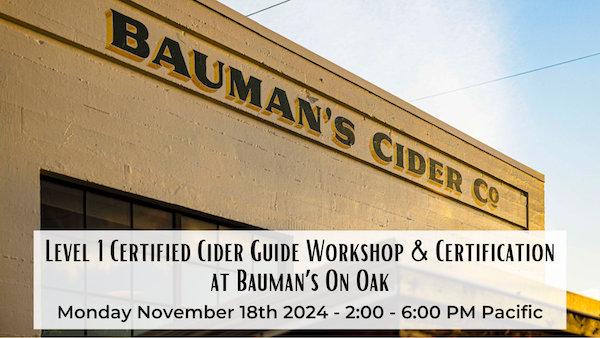
Join us on Monday, November 18, 2024 from 2:00 – 6:00 PM Pacific!
The American Cider Association is excited to collaborate with Bauman’s On Oak to host this Certified Cider Guide Workshop, which includes a tasting experience and certification opportunity.
This workshop is meant for all, and is the first level of the American Cider Association’s in depth international cider education program, Certified Cider Professional.
We have a wonderful afternoon planned including a Certified Instructor led in person training, including an “introduction to sensory evaluation” tasting experience featuring the five cider families. Participants of this workshop will also be able to take the test online immediately after the training or take the test at a later date.
Cost per person is $189 which includes the in person training, instructor led tasting experience, downloadable study guide, cidery tour and online exam fee. Please note that ACA members will receive $50 off registration. Members can find the discount code in the Resource Hub by clicking here.
All are welcome! Please share this event with anyone who sells cider, works in a tasting room or retail shop, chefs, sommeliers, cicerones, buyers and cidermakers who are interested in cider education or in adding a cider certification to their accreditation or cider fans who want to up their cider street cred.
Schedule
- 1:45 PM: Arrival and Check-in
- 2:00 – 5:00 PM: Presentation (with breaks)
- 5:00 – 6:00 PM: Tasting Experience
- 6:00 PM: Take the Online Level 1 Certified Cider Guide Test (bring your own laptop)
- 6:30 PM: Cidery Tour and Networking
Guest Blog: Leveraging Digital Marketing Channels to Educate and Engage Your Audience
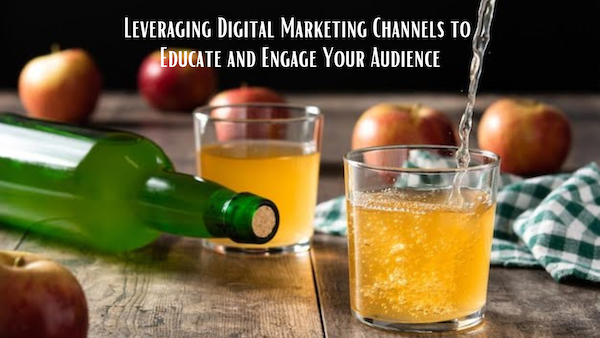
The views, information, or opinions expressed in guest blogs are solely those of the authors involved and do not necessarily represent those of the American Cider Association.
Digital marketing offers a world of opportunities for cider producers to distribute and display educational content, but where do you start? Many cider brands need help finding clarity in the maze of potential digital marketing channels. Not only do you have to figure out which channels to use, but also how to use them well. In addition to the overwhelming selection of channels, how do you decide where to park your educational cider content that will bring you the most ROI? Each digital channel has its own pros and cons, but one of the best ways to pinpoint which platforms fit your brand is to evaluate your content goals, identify your audience, and acknowledge your team’s bandwidth. The good news is that with a focused strategy, you can efficiently and effectively leverage digital channels to reach your loyal fans (and expose your cider to new ones) using the educational content you have already curated. While not 100% comprehensive, let’s dive into some popular digital marketing channels so you can get those creative juices flowing on how to present and distribute your educational content. Think of it not as randomly throwing marketing darts, hoping they hit your target, but crafting a well-thought-out content recipe that combines the perfect blend of ingredients to create your unique brand voice. You have already worked hard to create educational content about cider ingredients, production processes, flavor profiles, consumption, and your brand—now it’s time to shift that content into overdrive.
Targeted Approach
Know Your Ideal Audiences: Understanding where your audience likes to consume information allows you to meet them where they are. The basic idea is to fold yourself into their existing online universe. This practice increases content engagement rates and ensures the right people see your messages. However, the first step is to determine the audience you are trying to reach with your educational content.
Example: Knowing that their target audiences spend most of their time on Instagram, Wise Bird Cider from Lexington, KY, has curated a fun, fact-filled profile of feed posts, Stories, and Reels that educate their followers about ingredients and production processes on Instagram. Audiences are learning something new and doing it based on their own channel preferences.
Photo courtesy of Wise Bird Cider
Leverage Your Channel Goals: Each digital marketing channel has unique strengths and weaknesses. Aligning your goals with each channel’s strengths can make your efforts more efficient and effective. Some channels are better than others at increasing brand awareness, improving engagement, solidifying brand loyalty, or encouraging purchase activity. Not sure what purpose each channel holds? Visit their website and read about their brand to learn more about what they are trying to achieve with the platform.
Bandwidth Consideration: Spreading yourself too thin across multiple channels can dilute your efforts and lead to inconsistent and sometimes even conflicting messaging. Focus on a few channels where you can maintain high-quality content and regular engagement, but do not dismiss the other channels completely! It’s not wrong to spread out brand presence on multiple channels, but make sure you have a team of the proper size to do it well before adopting any new platforms.
Channel Examples
Email Marketing:
Email marketing is a fantastic way of communicating educational information about hard cider. You can leverage long-form content to inform and connect with your readers. This channel is excellent for storytelling, education, personalization of your brand, and promotion — all rolled up into one. Email marketing typically includes most, if not all, demographics, allowing you to cast an extensive net. Being permission-based, you can also be sure that the reader actually wants to see your content. You can further personalize the experience by tagging and segmenting your audience, making it truly special for your fans by directing more specialized educational content to those who engage with your topic-specific calls to action (CTAs).
Example: Send an email with a brief insight into how cider is made (not brewed) and the common ingredients in cider recipes, or plan out a feature about a specific variety of fruit. To increase engagement, include visuals and additional outbound links that support your content.
TikTok, Instagram Reels, and YouTube Shorts
These platforms are ideal for targeting younger demographics with quick educational tips about cider. The ethos of these channels is for entertainment and video views, so leverage them to stop the scroll, build brand awareness, and attract new customers by teaching them something new. While the primary goal on these platforms isn’t necessarily direct sales, providing fun and educational content can and will create enjoyable moments with your audience. These interactions will build a positive association with your brand and foster a sense of community, leading to future purchases. Also, who doesn’t like a little bit of fun?
Example: TikTok content from Bivouac Ciderworks in San Diego, CA, demonstrates a lovely mix of educational content in conjunction with current social media trends, like how to create a cider cocktail- in this case, a Biv Cider Michelada (leverages the trend – make something with me).
Photo courtesy of Bivouac Ciderworks
Facebook Events
Facebook remains a relevant platform for promoting cider brands, even if you think that channel is on the downslope. While the FB feed is debatable, the actual start of the show is FB Events. Cider education events like tours, classes, and tastings can be announced to your fans through page updates and reach new audiences through organic posts. While this platform trends toward an older demographic, it’s still crucial. Offering educational events allows fans to engage on a deeper level with your brand, and event RSVPs contribute to your engagement metrics on Facebook, increasing your organic content’s general reach.
Example: Host a cider tour at your farm or production facility that teaches about cider production and post on FB Events. Post updates leading up to the event to encourage attendee engagement within the event dashboard. On the event day, allow attendees to interact with the pressing process, learn about ingredients, and take home their cider- all while reminding them to post about the event and tag you on social media. Events create memorable experiences with your brand and tend to lead to future purchases, but when accented by social media presence, the benefits will continue to compound.
YouTube
YouTube is where people go to learn. From in-depth tutorials to quick, punchy Shorts, this platform is perfect for reaching Gen Z and Millennials. For cider brands, YouTube offers a unique opportunity to create a library of educational content that informs and builds a community of dedicated fans who view your brand as a trusted authority. Show behind-the-scenes content to build trust and resonate with viewers who appreciate authenticity. You could host live Q&A sessions to engage your audience in real-time. These immersive experiences will make them feel like they are part of your community! Collaborate with influencers or industry experts to co-create content, broaden your reach, and add credibility to your educational efforts. Highlight local ingredients or regional specialties significant to your brand to provide engaging, unique content for your viewers.
Example: Albemarle Ciderworks, from North Garden, VA, has created curated playlists of educational content about cider ingredients and cider-making processes of bite-sized videos that are easy for any viewer to understand and foster a connection with the brand.
Screenshot courtesy of Albemarle Ciderworks YouTube channel.
Twitter and Reddit
If you focus on the science and technical production aspects of cider making, Twitter and Reddit offer unique opportunities to engage with your audience more deeply- in a very technical and beverage-geeky way. Twitter is perfect for sharing bite-sized educational content and engaging in real-time conversations. Use hashtags relevant to the cider industry and participate in trending discussions to increase your visibility. Reddit’s community-driven structure allows you to reach highly targeted groups interested in cider making and contribute to conversations that would establish your brand as an industry “thought leader.” Subreddits like r/cider and r/fermentation are excellent for interacting with a community that is genuinely interested in the nuances of cider production.
Example: Tweet technical information about cider fermentation, highlighting particular scientific insights or ingredients. Use threads to provide detailed breakdowns of complex topics and engage with your audience’s questions and comments.
Example: Stem Ciders, located in Colorado, leverages Twitter to connect with its audience by sharing educational content about cider varieties, the importance of using fresh (and unique) ingredients, and behind-the-scenes looks at their production processes.
Photo courtesy of Stem Ciders
Efficient Channel Selection for Small Teams
If your resources are limited, you have a small marketing team, or you’re just plain short on time, maximizing your marketing efforts is crucial. Focusing on the most effective digital marketing channels that fit your business goals will help you determine which channels are worth your time. Here’s how you can evaluate if a channel is right for your brand:
- Align With Your Audience: First, make sure the channels you choose are where your target audience spends their time. This method prevents you from wasting effort on platforms that don’t yield significant engagement.
- Match Content with Channels: Tailor your content to each platform’s strengths. Selecting platforms that best showcase the type of educational content you’re producing will maximize your impact.
- Concentrate Your Energy: Avoid spreading yourself too thin by focusing on a few channels where you can maintain high-quality and consistent engagement. It’s better to excel on two or three platforms than to provide mediocre content on many.
- Understand Your Costs: Be aware of the costs associated with each channel, including advertising spend, software expenses, and the time required to maintain your presence. Knowing these costs will help you allocate your budget and resources more efficiently.
- Analyze and Optimize: Review your campaigns’ performance metrics regularly. Prioritize channels that show high engagement and conversion rates, and scale back or reconsider those with low ROI.
By focusing your efforts thoughtfully, you can ensure the highest possible return on your digital marketing investments, even with a small team and limited resources.
So are you ready to see your cider brand flourish digitally? Follow these tips and watch your brand awareness and customer base grow—no guesswork is required. By strategically selecting the proper digital marketing channels, you can significantly enhance your brand’s online presence, campaign efficacy, and overall brand awareness with your educationally focused (and fun) cider content. This approach will improve the likelihood of purchases and foster a stronger sense of loyalty and community among your existing fans.
Author Bio

Julie Rhodes is the owner of Not Your Hobby Marketing Solutions, an educational services & professional consulting company that teaches sales, marketing, and management tactics to growing craft beverage businesses. She is an instructor for various business-focused continuing education programs at institutions like the University of Richmond and UC Davis, as well as an independent beverage business journalist, with works in Craft Brewing Business, Fintech, PorchDrinking.com amongst others, and the 2023 BA Mentor of the Year. Find out more at NotYourHobbyMarketing.com or contact her directly at julie@notyourhobbymarketing.com
2025 ACA Award Nominations

The American Cider Association is pleased to announce that we have opened nominations for the ACA Awards for folks who are doing great things for cider! We welcome your nominations for businesses and people who have been excellent ambassadors for cider in the last year.
Please nominate only one business or person per category. Businesses should not be cideries, but those who help promote cider through their support of cideries and cidermakers. Please submit your nominations by December 1, 2024. Only submissions from active members will be accepted.
We will be presenting awards in each ACA defined region in the following categories:
- Best Cider Retailer
- Best Cider Focused Establishment
- Best Cider Distributor
- Cider Advocate of the Year: A cider tender that excels at promoting cider (Cidery employees can nominated for this award)
- Excellence in Leadership within the Industry (ACA Member)
- Significant Impact on the Industry
- Apple Advocate of the Year: an individual that excels at being an ambassador to the fruit
Awards will be presented at CiderCon® 2025!






